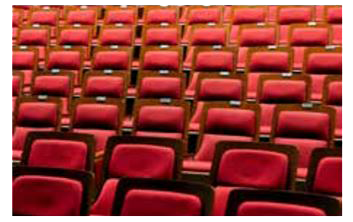Six identical coins are arranged in a row. The total number of ways in which the number of heads is equal to the number of tails is
35
15
140
70
The correct Answer is:D
Step by step video, text & image solution for Six identical coins are arranged in a row. The total number of ways in which the number of heads is equal to the number of tails is by Maths experts to help you in doubts & scoring excellent marks in Class 14 exams.
Updated on:21/07/2023Topper's Solved these Questions
- PERMUTATIONS & COMBINATIONS Book:ARIHANT SSCChapter:PERMUTATIONS & COMBINATIONS Exercise:EXERCISE (LEVEL-2)
Explore 82 Videos
- PERCENTAGESBook:ARIHANT SSCChapter:PERCENTAGESExercise:Final round
Explore 50 Videos
- PERMUTATIONS AND COMBINATIONSBook:ARIHANT SSCChapter:PERMUTATIONS AND COMBINATIONSExercise:HIGHER SKILL LEVEL QUESTIONS
Explore 19 Videos
Similar Questions
2nd idetical coins are arrangeed in a row and the number of ways in which the number of heads is equal to the nuber of tails is 70, then n= (A) 4 (B) 5 (C) 3 (D) none of these
View SolutionIn an auditorium, seats are arranged in rows was equal to the number of seats in each row. When the number of rows was doubled and the number of seats in each row was reduced by 10, the total number of seats increased by 300. Find the number of rows in original arrangement.
View Solution
Knowledge Check
Six identical coins are arranged in a row. The total number of ways in which the number of heads is equal to the number of tails is
A35B15C140D70Eight indentical coins are arranged in a row. The total number of ways in which the number of heads is equal to the number of tails, is :
A35B15C140D70Find the mean number of heads in three tosses of a fair coin.
A32B52C12D18
In an auditorium, seats are arranged in rows and columns. The number of rows were equal to the number of seats in each row. When the number of rows were doubled and the number of seats in each row was reduced by 10, the total number of seats increased by 300.

How many number of rows are there in the original arrangement?
View SolutionIn an auditorium, seats are arranged in rows and columns. The number of rows were equal to the number of seats in each row. When the number of rows were doubled and the number of seats in each row was reduced by 10, the total number of seats increased by 300.

How many number of seats are there in the auditorium in original arrangement ?
View SolutionIn an auditorium, seats are arranged in rows and columns. The number of rows were equal to the number of seats in each row. When the number of rows were doubled and the number of seats in each row was reduced by 10, the total number of seats increased by 300.

How many number of seats are there in the auditorium after re-arrangement.
View SolutionIn an auditorium, seats are arranged in rows and columns. The number of rows were equal to the number of seats in each row. When the number of rows were doubled and the number of seats in each row was reduced by 10, the total number of seats increased by 300.

How many number of columns are there in the auditorium after re-arrangement?
View SolutionIn an auditorium, seats are arranged in rows and columns. The number of rows were equal to the number of seats in each row. When the number of rows were doubled and the number of seats in each row was reduced by 10, the total number of seats increased by 300.

If x is taken as number of row in original arrangement which of the following quadratic equation describe the situation ?
View Solution
